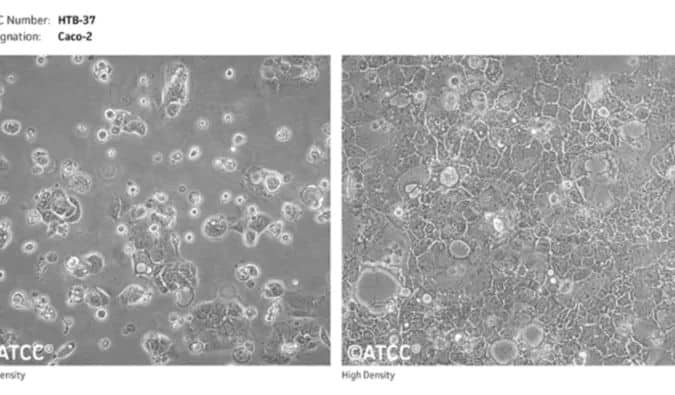Caco-2 Cell Permeability Assay


Caco-2 cells are human colon cancer cell line commonly used to simulate the characteristics and functions of the epithelial cell layer of the human small intestine. This cell line was first isolated from a tumor in a male patient with colon adenocarcinoma in 1977 and was named Caco-2.
Caco-2 Permeability Assay is a commonly used in vitro experimental method to evaluate the absorption and permeability of compounds in the human intestinal tract. The absorption and permeability of drugs are important pharmacokinetic parameters when administered orally. Based on the characteristics of the human colon cancer cell line Caco-2, it is possible to predict the oral bioavailability of compounds by simulating the conditions of the small intestinal epithelial cell layer. When Caco-2 cells are cultured on permeable polycarbonate membranes, they form a monolayer of epithelial cells that can simulate the morphology of human intestinal epithelial cells, with apical (AP) and basolateral (BL) structures and brush border microvilli on the apical surface. Compared to Parallel Artificial Membrane Permeability Assay (PAMPA), Caco-2 cells have lower flux and higher cost. However, Caco-2 cells can simultaneously screen large quantities of drugs quickly with less drug required, making them a relatively economical and time-saving choice compared to animal models. Furthermore, Caco-2 cells can express intestinal transporters and enzymes, making it possible to predict active transport and drug interactions involving multiple transporters.
The steps of Caco-2 cell permeability assays are as follows:
- Pre-culture Caco-2 cells on porous transparent culture membranes to form a monolayer of cells, usually taking 14-28 days. During the culture process, ensure that Caco-2 cells reach a certain level of differentiation to better simulate the intestinal epithelial cell layer.
- Add the test compounds to HBSS and allow it to come into contact with the Caco-2 cells.
- Incubate the cells in a CO2 incubator at a constant temperature, humidity, and CO2 concentration for a certain period of time, usually taking 2 hours.
- After incubation, collect the upper (above the cells) and lower (below the cell layer into the porous membrane) compartments separately.
- Measure the concentration of the compounds in the samples using appropriate techniques such as High-Performance Liquid Chromatography (HPLC) or Liquid Chromatography-Mass Spectrometry (LC-MS).
- Calculate the compound’s permeability rate, absorption rate, and other relevant parameters by comparing the compound’s concentration in the upper and lower compartments. The calculation of the apparent permeability coefficient (Papp) of the drug in the Caco-2 cell monolayer model is Papp= dCr/dt ×Vr× 1/A × 1/C0 ,the unit of Papp is cm/s.
Medicilon has rich experience in in vitro research on pharmacokinetics including metabolic stability, P450 induction and inhibition, metabolic pathway and metabolite identification, with animals involved including rats, mice, rabbits, dogs and monkeys. For more.
Medicilon has over 19 years of experience in in vitro pharmacokinetic studies and can provide various in vitro research services, including metabolic stability, P450 induction and inhibition, metabolic pathway studies, and metabolite identification. The animals involved in the studies include rats, mice, rabbits, dogs, monkeys, etc. Medicilon completes over 20 preclinical DMPK declaration studies for new drugs each year and conducts PK screening of more than 2000 compounds annually. As a one-step integrated service platform, Medicilon is committed to exploring advanced technologies and methods to meet the needs of customers in exploring new drug development and providing more efficient and cost-effective research services to accelerate the drug development process. Empowering global partners, focusing on Chinese innovation, and contributing to human health!
Reference;
- Xiu-wei Yang, Xiao-da Yang, Ying Wang, Lian Ma, Yue Zhang, Xiao-gai Yang, Kui Wang. Establishment of Caco-2 cell monolayer model and standard operation procedure for assessing intestinal absorption of chemical components of traditional Chinese medicine. Journal of Chinese Integrative Medicine, 2007, 5(6): 634-641.
- Wang Sha,Liu Siqi,Ding Pengmin,Pang Yuesheng,Tao Zhi,Wang Rufeng (2020). Application of in vitro Models in Metabolism of Traditional Chinese Medicines.PROGRESS IN PHARMACEUTICAL SCIENCES,44(2), 119-132.

